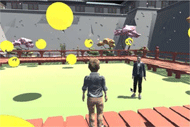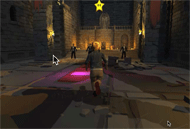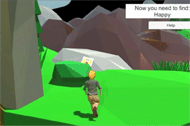SHENG-CHIEH CHIU, YUN LEE, KUO-HSUAN HSU, SZU-HUA CHEN, I-JOU CHI, SUNG-JUNG HSIEH
National Cheng Kung University
Problem Statement/Research Question and Background
Autism spectrum disorder (ASD) is believed to be one of the most severe developmental problems among developmental delay issues. According to Autism Speaks, an autism advocacy organization, children with ASD are challenged with social skills, repetitive behaviors, speech, and nonverbal communication. These challenges impact not only the children themselves but also the people around them. Therefore, it is important to provide the children with ASD with treatments early on to help improve the quality of their lives later on. Moreover, the Centers for Diseases and Prevention (CDC) of the United States points out that the number of children diagnosed with ASD increased from one in every 88 to one in every 59 between 2012 and 2018. CDC also notes that among those between ages 3 and 17, school-aged children (ages 6 to 12) have the highest prevalence of ASD. Therefore, it is our mission to find an innovative treatment to meet the needs of school-age children with ASD. It has been estimated that at least one in 10, or about 6 million people, has a serious emotional disturbance at some point in their life (General and Mental Health Services Administration 1999). The early social-emotional skills are so important as they are related to how socially, emotionally, academically, and professionally skilled people become later in life. If the emotional skills can be improved, children with ASD would be more likely to have the right reactions toward others, which would improve their social interactions. Based on the descriptions above, we decided to design an application combined with the modern therapy techniques for children with ASD as a way to improve their emotional ability.
Methods/Approach/Solutions Considered

In order to put our ideas into practice, some methods are taken into consideration. First, six basic emotions are included in our application to help train the children to recognize emotions. Second, because children with ASD are attracted to high-tech products, using handheld devices is a preferred method. Third, adding some fun factors into the application is needed because our application is designed for school-age children. Last but not least, because children with ASD can focus more on familiar faces than unfamiliar ones (Oberwelland, Schilbach et al. 2017) we customize the game characters’ faces in the application to improve the efficiency of learning emotions. We named our application Emospace due to the design’s purpose of emotional training and the story’s background setting. We expect that everyone can empathize with all emotions, just like space includes all the stars.
Description of Final Approach and Design
Customization Process:
Two clear pictures are shown for the modeled person, one for the front view of the face and the other for the left-profile view of the face. We used CrazyTalk (a software package) to mark the facial features. Then, the character’s facial muscles can be adjusted and the facial movements completed for each emotion. With the head model created by CrazyTalk, we import this head model into Character Creator (a software package) to adjust the body shape. After the adjustment, the model is imported into iClone (a software package) to continue the character animation. In iClone, the function of the brake painting and the sound file are made available. After setting the desired animation and tweaking it, the animation is processed in Unity. At the same time, the characters are processed in 3DXchange (a software package), where the model is converted into a file type of .fbx by 3DXchange so that it can be used in Unity as the final step.
Game Development:
A. Unity Game Content Design:

We expect to produce eight games, four of them have been completed so far. Each game is subdivided into three difficulty levels. When the user completes one stage, the game will enter the game scene of the next level, making the training more difficult. We increase the fun of the game by "collecting" items. When successfully collected, the items will be displayed on the screen. With this targeted play, it can increase the user’s willingness to play the games.
B. Customized Person Import:
The modeled characters are imported into Unity and appear on the game screen. The modeled objects include the child with ASD (user) and other close relatives (parents, siblings, peers, etc.) If the main character is the user himself or herself, it can make the user feel empathetic. Hence, the user's model is used as a protagonist, the models of the user’s important others become the characters that appear in the game.
C. Emotion Recognition Task:
In the future, we will begin the actual child test. We will recruit ten participants and let the participants use Emospace. Even though the game design itself includes directions designed based on certain guiding principles for users to has follow during the game, our project still requires a caregiver to accompany the participant to help leave a deeper impression of emotions, so that the effectiveness of the training will be more significant.
Outcome

Cost
The cost in the developing stage is estimated to be $1000, including the 3D-modeling software and some assets in Unity. Emospace is mainly built through customization. The customization process not only contains family model building but also needs to ensure that each Emospace game will operate smoothly. Consequently, according to our experience, the most appropriate expected price for each game would be $100.
The primary customers of Emospace would be hospitals and clinics. Furthermore, we expect that schools with special education programs can take advantage of Emospace. Generally, Emospace can be treated as different products depending on how it is used and can be marketed accordingly. For example, it can be a supplementary therapy tool for a clinic or a good teaching material for emotion learning for an education organization. In the latter example, the custom models will be the teachers and classmates, so the customization process will be more difficult. However, Emospace will be used by the whole class and not just one child. The expected price can be cheaper per child. The per-pupil price would differ depending on the scale of the organization.
Significance
We believe that Emospace can afford an effective way of treating the emotional challenges of children with ASD. In recent years, there have been many applications that are developed for children with ASD, but we discovered that the applications rarely focus on the topic of emotional abilities. Compared to other emotion training applications that have been released so far for children with ASD, what makes Emospace significant is that we increase the gameplay by using the level-up gaming style, which can better attract the attention of the children with ASD during the training.
Emospace is also special in that it customizes characters and uses applied behavior analysis (ABA). According to (Oberwelland, Schilbach et al. 2017), when children with ASD interact with the people they are familiar with, the brain area that deals with social and emotional behaviors is clearly activated in contrast to when they interact with those they are not familiar with. By using the strategy based on the principle of ABA, the game can improve the effectiveness of gaining new skills for the children with ASD (Iovannone, Dunlap et al. 2003). We believe this game is a big breakthrough in emotion training. We look forward to seeing the participants enhance their emotional abilities by using Emospace.
References
General, U. S. J. S. A. and C. f. M. H. S. Mental Health Services Administration, National Institutes of Health, National Institute of Mental Health (1999). "Mental health: A report of the surgeon general. Rockville, MD: US Department of Health and Human Services."
Iovannone, R., et al. (2003). "Effective educational practices for students with autism spectrum disorders." 18(3): 150-165.
Oberwelland, E., et al. (2017). "Young adolescents with autism show abnormal joint attention network: A gaze contingent fMRI study." 14: 112-121.
Acknowledgment
We thank our supervisor, Dr. Yu-Hua Fang, for supporting our team to develop this application by using Unity, C# programming language, and 3D-modeling software. We also thank our other supervisor, Dr. Ling-Yi Lin, for pointing out the difficulties that therapists face when treating the children with ASD and for advising us to apply some methods that might be useful during treatment. Without them, our team could not have finished our application.



